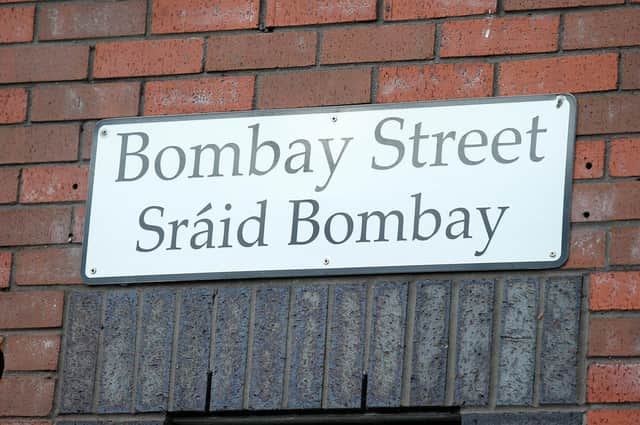Over 300 Irish signs to be erected in west Belfast as Unionists say move will raise community tensions


A decision to sign the Gaeltacht Quarter en masse at the latest meeting of the Strategic Policy and Resources Committee at City Hall involved some bitter exchanges between the SDLP and the DUP.
Last October the same committee agreed in principle to erect Irish dual language streets signs en masse in the area to save the council money rather than dealing with applications individually.
Advertisement
Hide AdAdvertisement
Hide AdCouncillors also agreed to an objection threshold of 15 percent. This means it will take objections from at least 15 percent of any street in the Gaeltacht to trigger the requirement for a normal application and engagement of the current full process for a specific street. The proposals passed the full council without support from any of the unionist parties.
Councillors at the committee meeting this month received the officer report detailing the 301 streets involved, including ten of which have no occupiers. They were recommended to agree to sign all 301 streets, and agree to a full survey for Clovelly Street – the only street where the level of objections to the proposed approach met the 15 percent threshold.
Councillors were also recommended to agree a maximum budget of up to £170,000. All the unionist councillors in the chamber voted against the recommendations.
DUP Councillor Ian McLaughlin told the chamber: “I am not comfortable with this agreed boundary for this agreed bloc. I certainly had no role to play in that, I would never have agreed to it, and I don’t understand who did, or when they did.
Advertisement
Hide AdAdvertisement
Hide Ad“We have been asked to create a demarcation zone between people who wish to avail of Irish language signage, and those who don’t.
“There are people, with the greatest respect, who want the Irish language, and quite rightly so. But in my constituency, which has quite a few interface barriers still in place, they do not.”
He added: “There are a lot of people whose single interaction with the Irish language was very poor. It was usually when the murderer or terrorist that murdered their loved one used to scream the famous words “tiocfaidh ár lá” – whatever it was – as they left the scene of their horrendous crime.
“I don’t care if it upsets anybody or not. We have people today who are traumatised when you mention the words “Irish language” – so nothing that you propose eases the fears of those people who do not want any interaction whatsoever with the Irish language.
Advertisement
Hide AdAdvertisement
Hide Ad“I understood from the outset that the boundary for the Gaeltacht Quarter, when it came to interface communities, would be the white line in the centre of the road, so that there was a neutral zone between this particular Irish language sign area, and that where people didn’t want anything to do with it.
“I propose we have some kind of a zone like that. It might only be a couple of metres on a road, but it means a lot to people who live in these interface areas. We will do immense damage with this process if we don’t try to alleviate the fears of people who live here.”
He said: “For example, Lanark Way in my community. The proposal is for one half of Lanark Way to have signage and the other half not to. The residents on Lanark Way who live closest to Shankill Road haven’t been asked their opinion on this. I don’t know whether the business community on the Springfield Road has.
“No matter what way I frame this, people are going to say it’s anti-Irish language. On the contrary, I am more interested in the impact it is going to have on community relations.”
Advertisement
Hide AdAdvertisement
Hide AdSDLP Councillor Carl Whyte replied: “Last Friday morning I was on the radio with another councillor who told me about the Irish language being inflicted on people, being propagated. Really significant and poisonous language has been used to describe a language.
“And today I have had to listen to this. There are other victims in this room, who wouldn’t dare to suggest any objection or reluctance to the English language because acts carried out against them or their families were carried out while an English phrase was spoken or used by that organisation.
“To move from a debate about street signs to casting up incidents that may or may not have happened, frankly is beneath contempt. You cannot say you are trying to work for community relations and the benefit of the Irish language through the erection of Irish language signs, and by the same token, use an argument (like that).”
He said: “It is an insult to people who speak and love and use this language. To those who brought it back to life in this city who come from a unionist background. This (argument) is being used as a way to divide and to delay.
Advertisement
Hide AdAdvertisement
Hide Ad“It is a deliberate tactic to stoke up anger and fear and resentment. We are seeing that the continued outworkings of this is the vandalisation of these signs, which police are now recording as hate crimes. That has to stop. Language has to be tempered.”
The council has said the process of signing the Gaeltacht under the bloc procedure will involve the erection of the nameplates in established clusters of approximately 30 streets at a time.